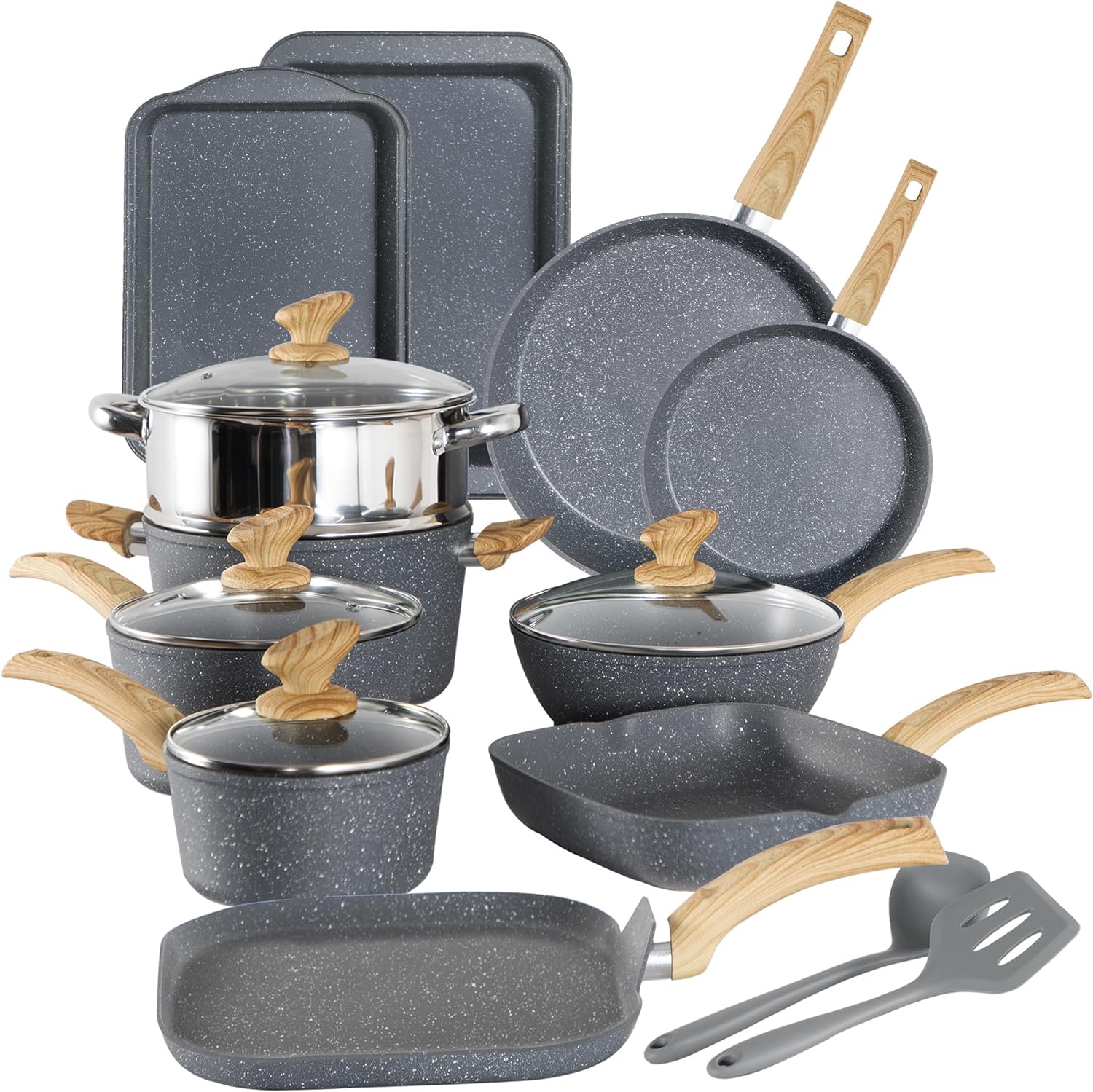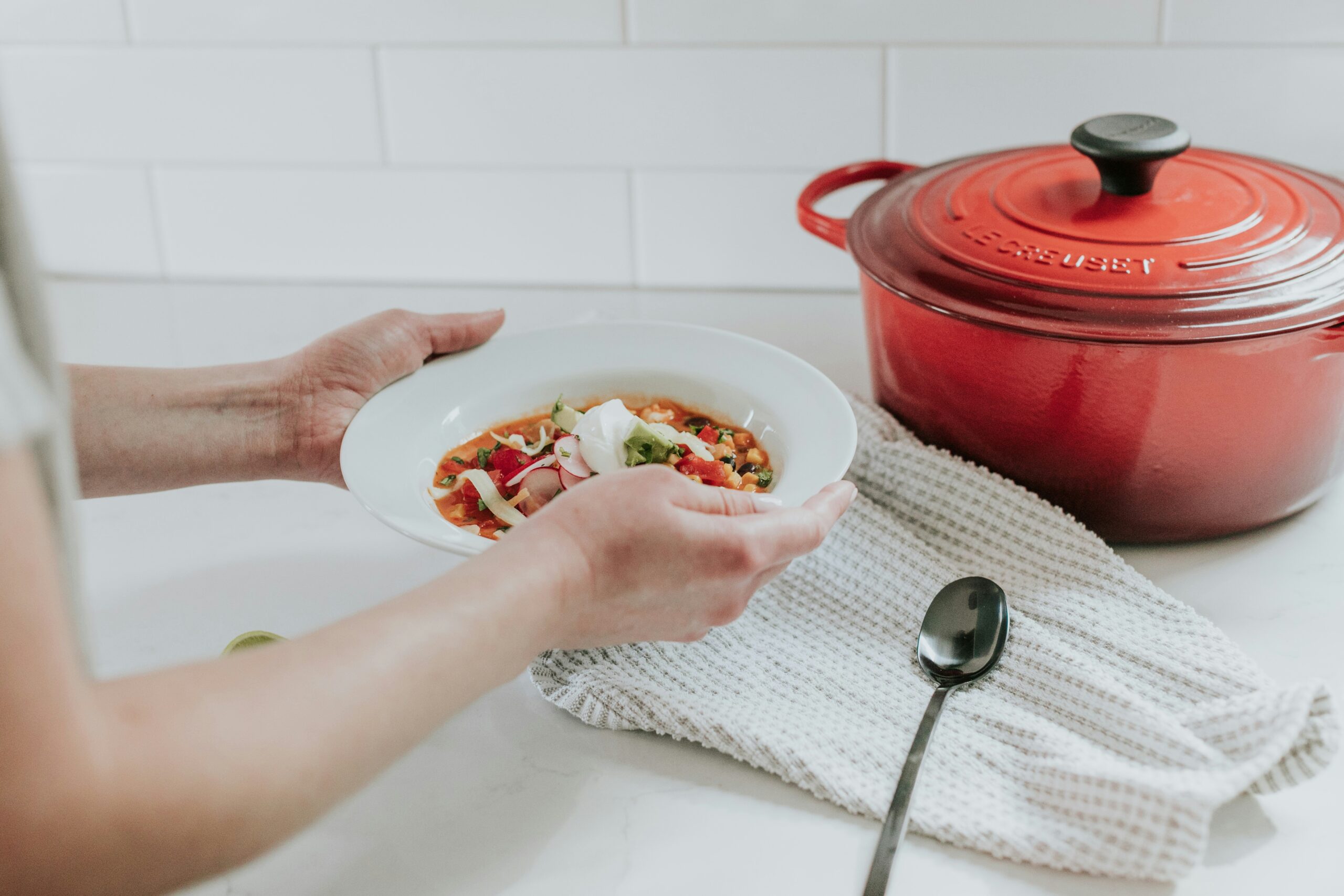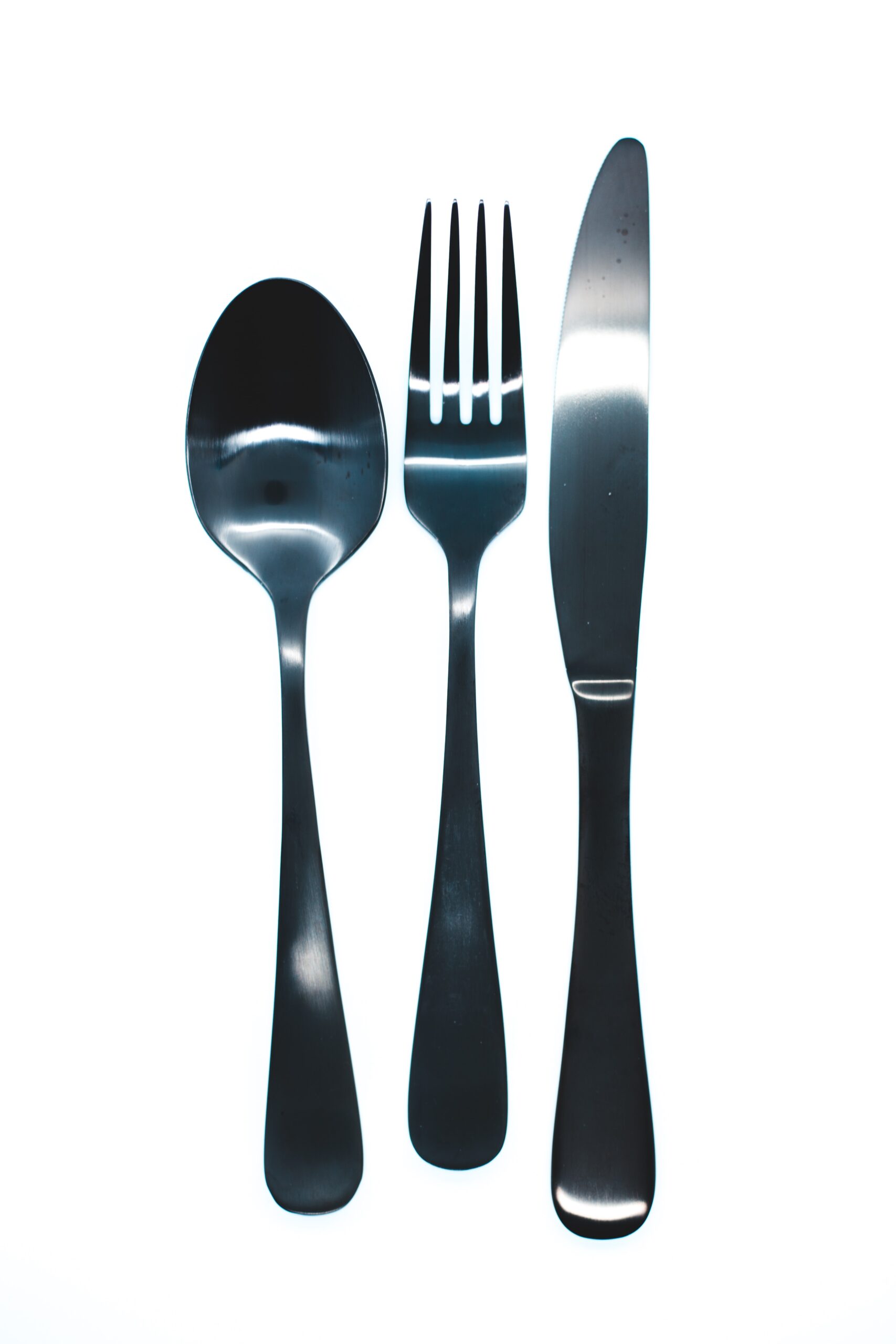Cooking is a joyous experience, but choosing the right cookware is equally important for both your food’s taste and your health. In this article, we will explore the types of cookware you should steer clear of to ensure your culinary adventures are not marred by potentially harmful materials. From non-stick pans to certain types of plastics, find out what cookware you should avoid and why. So, let’s get cooking without any worries and make informed choices to safeguard our well-being and savor the delicious flavors!
Non-Stick Cookware
Everyone loves an easy cooking experience and non-stick cookware is often the go-to choice for many home cooks. However, it’s important to be aware of the potential drawbacks of using non-stick cookware, particularly those coated with Teflon or ceramics.
Teflon Coated Cookware
Teflon-coated cookware has long been popular for its seamless release of food and effortless cleaning. However, there are concerns about the safety of this type of cookware, especially when it is subjected to high heat. When overheated, Teflon coatings can emit toxic fumes that can be harmful to both humans and pets.
To avoid any potential health risks, it is best to use Teflon-coated cookware only on low to medium heat settings and avoid using metal utensils or abrasive cleaning materials that can damage the coating.
Ceramic Non-Stick Cookware
Ceramic non-stick cookware is another alternative to traditional non-stick pans. While it is generally considered safer than Teflon-coated cookware, it is still important to exercise caution. Ceramic coatings can wear off over time, exposing the underlying metal surface and reducing their non-stick properties.
To maintain the longevity of your ceramic non-stick cookware, it is recommended to hand wash them with mild detergents and avoid using high heat settings. Additionally, avoid using metal utensils that can scratch the ceramic coating and opt for silicone or wooden utensils instead.
Unsafe Materials
Certain materials used in cookware can pose potential health risks. Here are a few examples of cookware materials you should be cautious of:
Aluminum Cookware
Aluminum cookware is known for its excellent heat conductivity and lightweight nature. However, prolonged use of aluminum cookware can lead to the leaching of aluminum into your food, especially when cooking acidic or alkaline ingredients. High levels of aluminum in the body have been linked to various health issues, including neurological disorders.
To minimize the risk of aluminum leaching, consider using stainless steel cookware with an aluminum core, which provides the benefits of heat conductivity while reducing direct contact between your food and the aluminum surface.
Copper Cookware
Copper cookware boasts exceptional heat distribution properties, making it a favorite among professional chefs. However, prolonged exposure to copper can lead to copper toxicity, which may cause symptoms such as nausea, vomiting, and stomach pain. Copper cookware should not be used for cooking acidic foods, as it can cause copper to leach into the food.
If you still wish to use copper cookware, ensure it is lined with a non-reactive metal, such as stainless steel, to prevent direct contact between your food and the copper surface.
Cast Iron Cookware
While cast iron cookware is beloved for its durability and ability to retain heat, it does have its downsides. Uncoated cast iron cookware can react with acidic foods, resulting in a metallic taste and potentially causing iron to leach into your meals. While small amounts of iron can be beneficial for some individuals, excessive intake can be harmful, particularly for those with certain medical conditions.
To minimize the risk of iron leaching, choose enameled cast iron cookware, which has a protective layer that prevents direct contact between your food and the iron surface.
Non-Anodized Aluminum Cookware
Similar to regular aluminum cookware, non-anodized aluminum cookware can potentially leach aluminum into your food. Anodization is an electrolytic process that creates a hard, non-reactive surface on the aluminum, making it more resistant to leaching and corrosion. It is advisable to opt for anodized aluminum cookware for safer cooking experiences.

Flimsy or Thin Cookware
Cookware that is flimsy or too thin can lead to uneven cooking, scorching, and decreased durability. Here are a couple of types of cookware that should be avoided due to their lack of sturdiness:
Low-Quality Stainless Steel Cookware
Not all stainless steel cookware is created equal. Some low-quality stainless steel cookware can be thin and prone to warping under high heat, resulting in uneven cooking and potential damage to your stovetop. When selecting stainless steel cookware, prioritize those with a heavier gauge and multi-ply construction for superior durability and even heat distribution.
Thin Aluminum Cookware
Just like flimsy stainless steel cookware, thin aluminum cookware can also lead to uneven cooking and scorched food. Thin aluminum pans may also dent easily and can be more prone to warping, especially when exposed to high heat.
Opt for thicker and heavier aluminum cookware to ensure better heat distribution and durability. Anodized aluminum pans are particularly recommended as they offer increased resistance to warping and better cooking performance.
Reactive Materials
Reactive materials can adversely affect the taste, appearance, and even the safety of your cooked food. It’s important to be aware of cookware materials that can interact with your ingredients:
Copper Cookware
As mentioned earlier, copper cookware is a reactive material that can result in metallic taste and color changes in certain foods. Acidic ingredients, such as tomatoes or citrus fruits, are particularly prone to reacting with copper. If you still prefer to use copper cookware, ensure it is lined with a non-reactive metal, such as stainless steel, to prevent any unwanted interactions.
Aluminum Cookware
Aluminum, as discussed earlier, is also a reactive material that can affect the taste and appearance of cooked food, particularly acidic or alkaline ingredients. Opt for stainless steel or anodized aluminum cookware instead, as they provide a more stable and non-reactive cooking surface.
Uncoated Cast Iron Cookware
Uncoated cast iron cookware can react with acidic ingredients, causing a metallic taste and discoloration. The porous nature of cast iron can also absorb flavors and aromas, leading to unexpected flavor transfers between different dishes. If you enjoy using cast iron cookware, make sure to use enameled or seasoned cast iron to minimize reactivity and enhance the overall cooking experience.

Plastic Cookware
Plastic cookware may seem convenient and lightweight, but it comes with its own set of concerns. Here are a couple of plastic items you should be careful when using:
Plastic Utensils
Plastic utensils are inexpensive and disposable, making them a popular choice for picnics and outdoor events. However, they can pose risks to your health, especially when exposed to high heat or used with hot food. Plastic utensils can melt or release harmful chemicals when exposed to excessive heat, potentially contaminating your food.
Consider opting for stainless steel, silicone, or wooden utensils, which are more durable, heat-resistant, and safer for food preparation.
Plastic Food Storage Containers
Storing food in plastic containers can also raise concerns about chemicals leaching into your food. Certain plastics, such as those labeled with recycling codes 3, 6, and 7, may contain harmful substances like BPA (bisphenol A) or phthalates. These chemicals can potentially migrate into your food, especially when the container is heated or when acidic foods are stored.
Choose food storage containers made from BPA-free plastics, glass, or stainless steel to ensure safer and more secure food storage.
Coatings and Finishes
While cookware coatings and finishes can enhance the cooking experience, it’s important to be aware of their potential drawbacks:
Cheap Non-Stick Coatings
While non-stick cookware can make cooking and cleaning a breeze, cheap non-stick coatings may not be durable or effective in the long run. Low-quality non-stick pans can wear off easily, leading to food sticking and potential health risks associated with ingesting the flakes or particles.
Invest in reputable non-stick cookware brands that use high-quality coatings, and follow the manufacturer’s instructions for proper use and maintenance.
Damaged or Scratched Coatings
Damaged or scratched coatings on cookware can compromise the non-stick properties and potentially expose the underlying material to your food. To prolong the life of your cookware’s coatings, avoid using metal utensils, abrasive sponges, or harsh cleaning agents that can cause scratches. Instead, opt for utensils and cleaning tools that are designed for non-stick cookware to maintain the integrity of the coatings.
Unstable Finishes
Some cookware may feature decorative or colored finishes that can be visually appealing but lack durability. These finishes may chip or peel over time, potentially contaminating your food with paint or coatings.
Stick to cookware with stable, high-quality finishes, such as stainless steel, ceramic, or properly enameled cookware, to avoid any potential risks.

Toxic Materials
Cookware made from certain materials can contain toxic substances that can be harmful to human health. Here are two materials to be cautious of:
Lead-Based Cookware
Cookware made with lead-based glazes or paints can pose a significant health risk, especially if acidic or hot ingredients are cooked in them. Lead exposure can lead to various health issues, including developmental delays, neurological damage, and impaired kidney function.
Always ensure that your cookware is certified lead-free and avoid using any cookware with cracked or chipped glazes.
PFOA or PFOS Coated Cookware
Perfluorooctanoic acid (PFOA) and perfluorooctanesulfonic acid (PFOS) are chemicals that were commonly used in the production of non-stick coatings, including Teflon. However, due to their potential adverse health effects and environmental concerns, many manufacturers have phased out their use.
When purchasing non-stick cookware, look for products labeled as PFOA or PFOS-free to ensure that you are not exposed to these potentially harmful substances.
Unreliable Handles
Cookware handles play a crucial role in ensuring safe and comfortable cooking experiences. Here are two types of handles to avoid:
Loose Handles
Cookware with loose handles can be dangerous, as it increases the risk of accidents and injuries while handling hot pots and pans. Loose handles can cause the cookware to become unstable or detach altogether, leading to spills, burns, or even dropping and breaking the cookware.
Before purchasing any cookware, give the handles a sturdy wiggle to ensure they are securely attached and unlikely to cause any mishaps.
Handles without Heat Resistance
Handles that lack proper heat resistance can become dangerously hot during cooking, increasing the risk of burns or scalds. Always check the product specifications to ensure that the handles are heat-resistant and designed to remain cool to the touch, even when the cookware is subjected to high temperatures.
Protective covers or grips can also be added to existing cookware handles to increase heat resistance and decrease the risk of accidents.
Difficult Maintenance
While some cookware may require minimal maintenance, others can be quite demanding. Here are a couple of types of cookware that can be particularly challenging to maintain:
Delicate Handwashing Only Cookware
Some cookware, such as certain types of glassware or delicate ceramic pieces, may require handwashing only to ensure their longevity and prevent damage. This can be inconvenient for those who prefer the convenience of a dishwasher.
Consider your lifestyle and preferences when selecting cookware, and opt for dishwasher-safe options when needed to simplify your cleaning routine.
High-Maintenance Materials
Certain types of cookware, such as copper or uncoated cast iron, require regular maintenance to keep them in optimal condition. This can involve seasoning, polishing, and re-seasoning processes, which can be time-consuming and labor-intensive.
If you prefer low-maintenance cookware, consider materials like stainless steel or enameled cast iron, which require less upkeep while still providing excellent cooking performance.
Overpriced or Overrated Cookware
Not all cookware lives up to the hype, and it’s important not to fall for empty promises or pay exorbitant prices for ordinary quality. Here are a couple of scenarios to watch out for:
Hyped-Up Cookware without Real Benefits
Some cookware brands heavily market their products as superior or revolutionary, but in reality, they may not offer any significant advantages over more reasonably priced options. Always do thorough research, read customer reviews, and compare prices before investing in high-priced cookware that may not deliver on its promises.
Exorbitant Prices for Ordinary Quality
Price is not always an indicator of quality, and it’s essential to be mindful of overly expensive cookware that offers nothing extraordinary. Don’t be swayed by extravagant price tags if the cookware fails to demonstrate superior durability, performance, or additional features that justify the higher cost.
Take your time to shop around and consider multiple options before making a purchase to ensure you’re getting the best value for your money.
By being aware of the potential pitfalls and drawbacks of different types of cookware, you can make informed decisions and prioritize safety, functionality, and durability in your kitchen. Choose cookware that suits your cooking style, budget, and specific needs, ensuring a delightful cooking experience every time.











